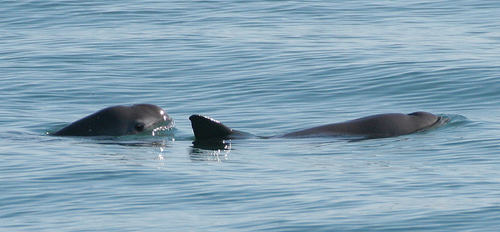
Vaquita
The vaquita, or Phocoena sinus, is a tiny, elusive porpoise with distinctive dark eye rings. Endemic to the Gulf of California, it’s critically endangered, with less than 10 individuals remaining. This shy marine creature is vital for maintaining the ecological balance of its habitat.
20 years
Lifespan
40.8233 kg
Weight
Length: 1.22 - 1.52 m
Size
Grey
Color
Critically Endangered
Conservation Status
Decreasing
Population Trend
Characteristics
Phocoena sinus, known as the vaquita, is a critically endangered porpoise species native to the northern part of the Gulf of California. Recognizable by its small size, dark eye rings, and lip patches, the vaquita is the smallest cetacean. Preferring shallow, warm waters, it plays a crucial role in marine biodiversity.
Distribution Range of the Vaquita
Phocoena sinus, commonly known as the vaquita, is native to the northern part of the Gulf of California, also known as the Sea of Cortez, in Mexico. This is the only region where the species is naturally found.
Vaquita's Habitat
Environmental Conditions
The vaquita inhabits shallow, turbid waters in the northern Gulf of California. These waters are often less than 50 meters deep and are characterized by a mixture of freshwater from the Colorado River and the salty ocean water, creating a unique estuarine environment. The region experiences a semi-arid climate with hot summers and mild winters.
Ecological Niche
Vaquitas are adapted to live in a small, specific range within the Gulf of California. They are typically found in areas with soft-bottom substrates, such as mud and sand, where they forage for fish and squid. Their ecological niche involves being a top predator in a small, isolated marine environment, and they play a role in maintaining the balance of the local marine ecosystem.
Copyright @ Nature Style Limited. All Rights Reserved.
 English
English